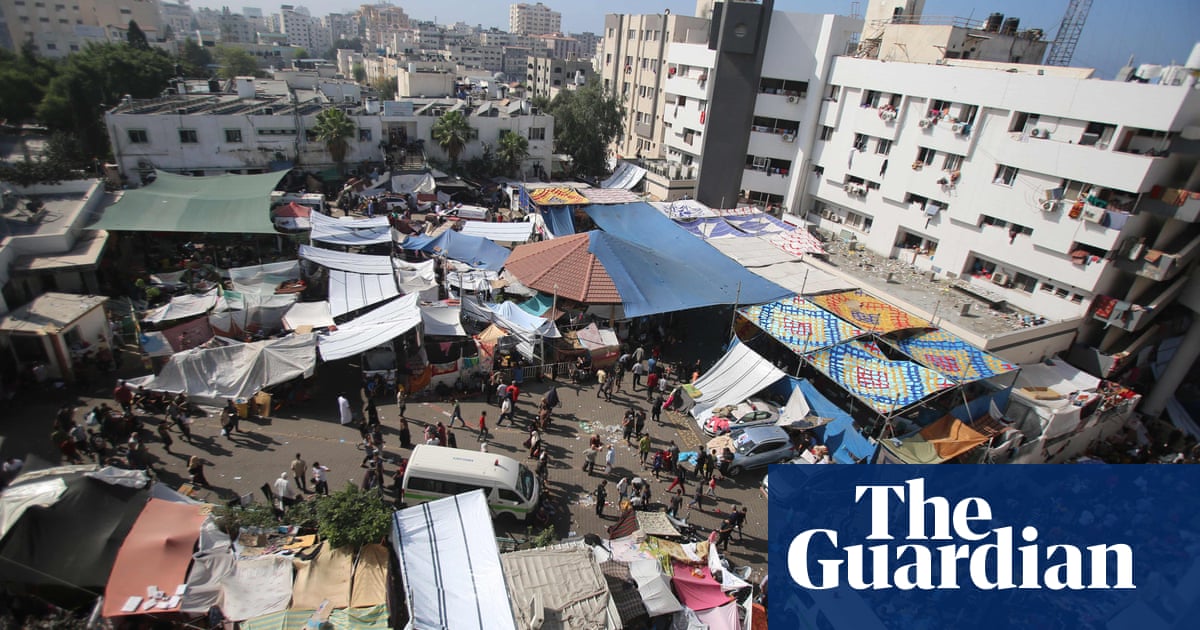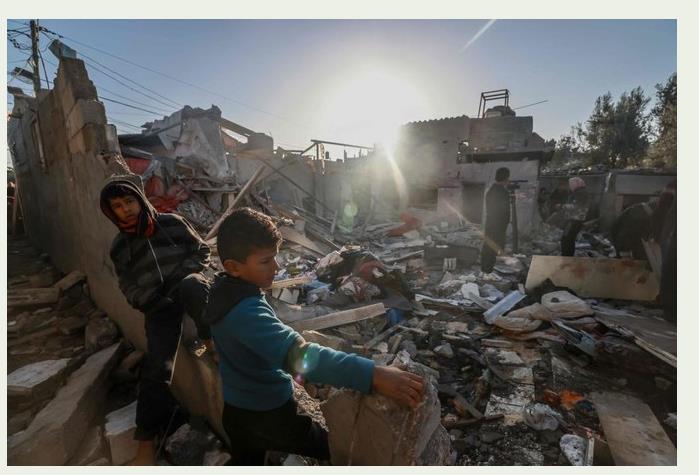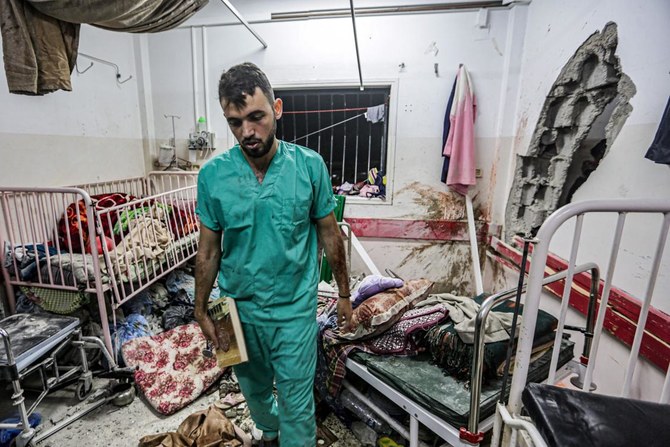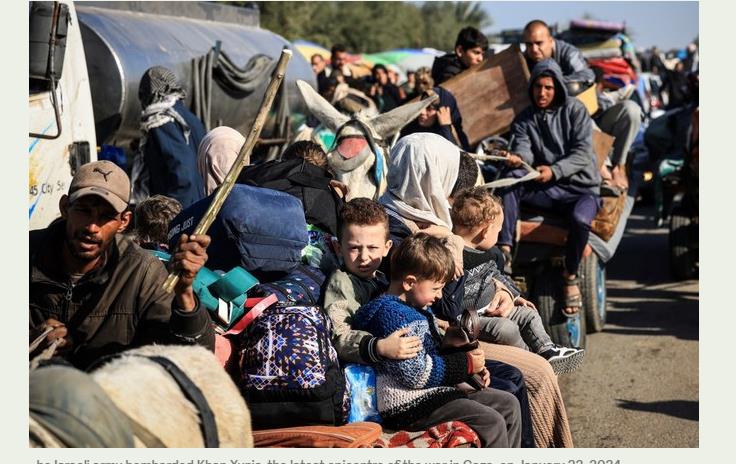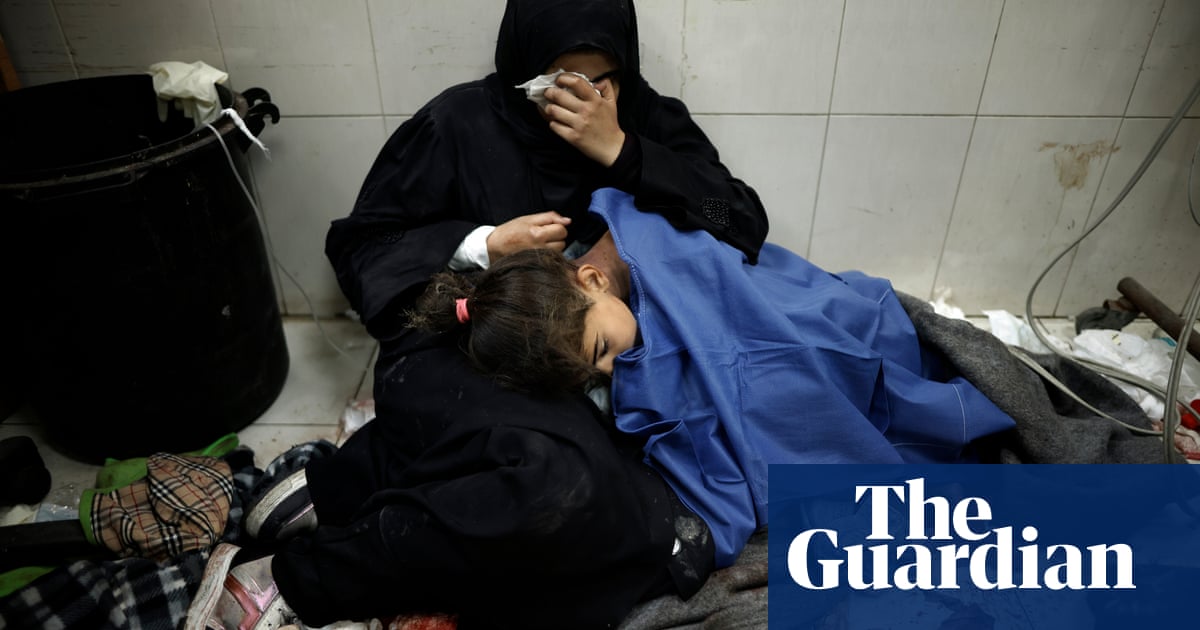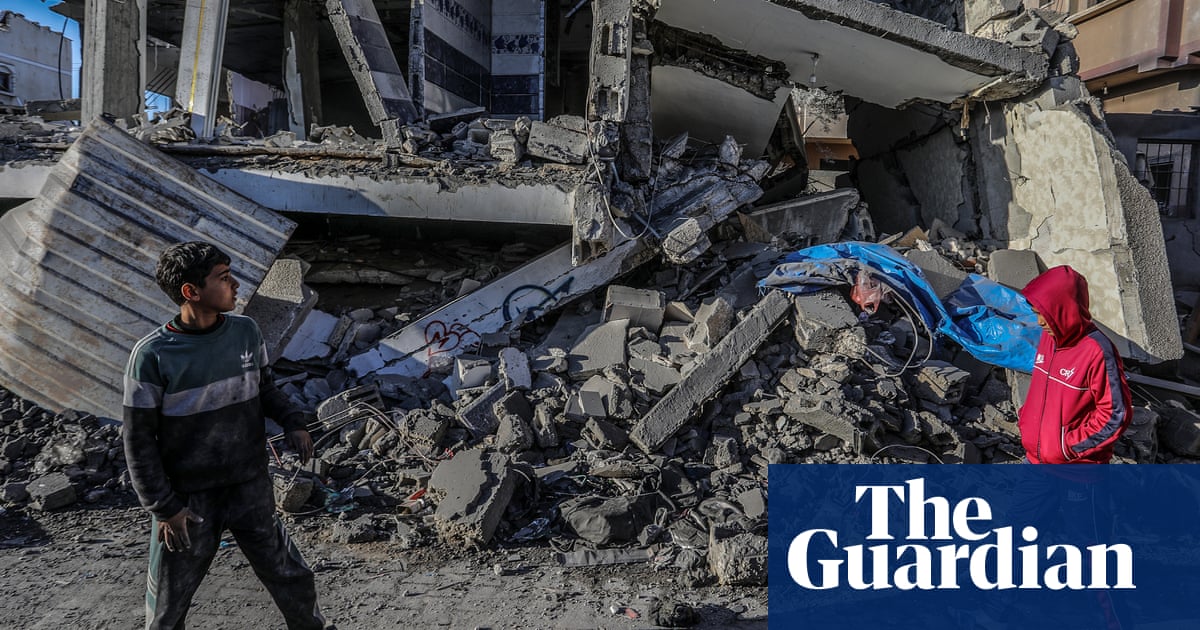
Israeli forces have advanced further into southern Gaza, with airstrikes and close-combat fighting nearing areas crowded with more than a million people who have sought refuge from fighting and destruction across the rest of the territory.
The prospect of major operations taking place in terrain with such a dense and vulnerable population is “deeply concerning”, say aid officials, who fear Gaza’s largest remaining hospital may have to be closed or evacuated.
Witnesses reported the sound of ground combat and explosions early on Friday in the west of Khan Younis, the main city in the south of Gaza, where Israel says many members and leaders of the Palestinian Islamist movement Hamas are hiding.
Medical staff said the fighting had come within metres of Nasser hospital, the biggest hospital still partly working in Gaza, over the past week. It has been receiving hundreds of wounded patients every day since the fighting shifted to the south last month. There are fears it could be forced to close because of Israeli bombardments and evacuation orders.
The Palestinian Red Crescent also reported “intense” artillery fire near the al-Amal hospital, while Gaza’s Hamas-run health ministry said 77 people were killed and dozens injured overnight.
The Israel Defense Forces (IDF) is fighting its farthest south so far in the campaign. Soldiers had “eliminated dozens of terrorists in close-quarters combat and with the assistance of tank fire and air support”, officials said. Israeli officials have accused Hamas fighters of operating from Nasser hospital, which staff deny.
So far, the conflict has displaced roughly 85% of Gaza’s 2.4 million people. Many fled to Khan Younis and Rafah after Israel ordered civilians in the north to evacuate at the beginning of the war. They are packed into UN-run shelters, where food, water, fuel and medical care are limited.
Others are living in crowded private apartments, makeshift camps, under plastic sheeting pegged to poles on wasteland, or even on roads.
Aid officials who have visited Gaza say the crowding is almost unprecedented. Aid convoys have difficulty travelling along roads half-blocked by displaced families, and a journey that might have taken 10 minutes takes an hour.
Israeli officials say they try to avoid civilian casualties and issue evacuation orders designed to clear areas of residents before they attack. They accuse Hamas of using the population as a human shield. Hamas denies the charge.
Analysts in Israel say securing control of Khan Younis and Rafah is essential to achieve its war aims of destroying the military capabilities of Hamas and freeing more than 132 hostages abducted by the group in the 7 October attacks. About half of the 240 hostages seized by Hamas were freed in November during a short-lived ceasefire in exchange for 240 Palestinian prisoners in Israeli jails. Some of those remaining hostages are thought to have been killed.
Many of the hostages are thought to be held in Khan Younis, possibly in tunnels below the city. Control of Rafah is seen as essential to cutting off Hamas from its supply routes from Egypt, the analysts said.
The prospect of a major Israeli assault in or near Rafah, a town on the border with Egypt that has become a refuge for almost a million displaced people, has alarmed humanitarian officials.
“Everybody is deeply, deeply anxious. Many have been displaced multiple times. People don’t see anywhere else to go. There is no real shelter anywhere else,” said Philippe Lazzarini, the head of the United Nations Relief and Works Agency for Palestine Refugees, shortly after returning from a three-day visit to Gaza earlier this week.
Attempts are being made to reopen al-Shifa hospital, Gaza’s largest, which became the centre of a fierce propaganda war last year when Israel was accused of deliberately targeting the site. Israeli officials denied this, and said Hamas had built a command complex under the hospital and used its facilities.
The hospital, which the World Health Organization described as “a death zone” after it largely ceased operations after raids and occupation by Israeli troops in November, has restarted basic services.
Dr Marwan Abu Saada, the director of surgery at al-Shifa hospital, said he was hoping to open an ICU next week and that some basic services had been restored but that fuel, power and medicine were still in very short supply. “The major oxygen generators are destroyed so we are relying on cylinders,” he said.
Residents of Khan Younis described heavy fighting and intense bombardment in the north and east of the city and, for the first time, in the west on Thursday, where they said tanks had advanced to carry out a raid before withdrawing.
“What is happening in Khan Younis now is complete madness: the occupation bombards the city in all directions, from the air and the ground too,” said Abu El-Abed. The 45-year-old lives in Khan Younis after being displaced several times with his family of seven since leaving Gaza City in the north earlier in the war.
Leo Cans, the MSF head of mission for Palestine, said the situation at the Nasser hospital there was “catastrophic”. Fighting had come “very close” and an airstrike 150 metres from the hospital had killed eight people and injured 80 on Monday, he said.
The IDF confirmed on Thursday that it had removed bodies from An Namsawi cemetery near Nasser hospital, after reports that the graveyard had been destroyed by tanks and graves emptied. The IDF told broadcaster CNN it had taken the bodies to identify whether any Israeli hostages were among them.
Footage also emerged on Thursday of Israeli troops blowing up the main campus of a university outside Gaza City in a controlled detonation – one of multiple universities they have destroyed.
The video, apparently taken by drone, showed a giant explosion engulfing the complex of buildings of al-Israa University.
The university, a private institution founded in 2014, said in a statement that its main building for graduate studies and bachelor’s colleges were destroyed. It said Israeli forces seized the complex 70 days ago and used it as a base. The Israeli army had no immediate comment.
In a briefing note, the UN said the explosion had taken place on Wednesday and said reports suggested it had “been used by the Israeli military as a military base and an ad hoc detention facility for interrogating Palestinian detainees before their transfer to an unknown location.”
A US state department spokesperson, Matthew Miller, said at a press briefing that Washington had raised the issue of the destruction of the university with Israel.
Elsewhere in Gaza, where a communications blackout entered a sixth day on Thursday, hindering rescue and relief efforts, medics said an Israeli airstrike on a home killed 16 people, half of them children, in the southern Gaza town of Rafah.
The war began when Hamas launched bloody attacks on Israel on 7 October that killed 1,200, mostly civilians.
A total of 24,620 Palestinians, mostly women and children, have been killed in Gaza since – according to the territory’s health ministry – with thousands more thought to be buried under the rubble of destroyed buildings. Tens of thousands more have been wounded.
Reuters reported that a strike had wiped out a branch of the Zemeli family in the early hours of Thursday. “Yesterday, I was playing with the children over there. They have all died,” Mahmoud al-Zameli, 10, who lived next door and was a cousin to some of those who died, told the news wire. “I’m the only one still alive.”




